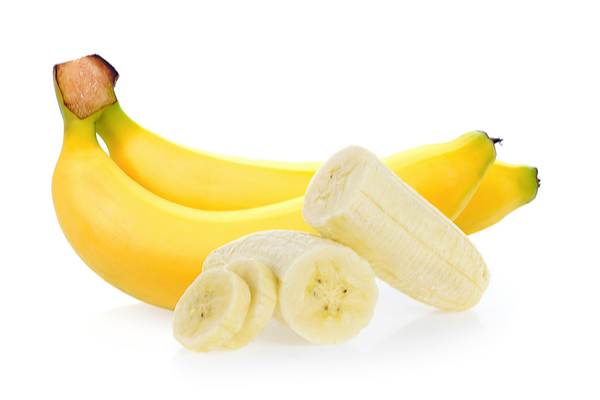The third Wednesday of April is National Banana Day, and in 2024, that’s the 17th! To honor the popular fruit, here’s everything you ever wanted to know about Bananas and more, courtesy Chiquita Brands.
Banana Trivia…
Bananas don’t grow on trees – they‘re actually giant herbs. The original, wild, banana was tiny and filled with large seeds the size of peppercorns. The fruit of the banana plant is botanically a berry.
The trunk of a banana plant is not made of wood, but of sheaths of tightly overlapping leaves.
To bear fruit, banana plants need at least fourteen consecutive months of frost-free weather, which is why they are not grown commercially in the continental United States. They require a tropical or sub-tropical climate.
The banana plant reaches its full height of 15 to 30 feet in about one year.
An individual banana is called a finger. The fruit’s name comes from a West African language [Wolof, the major language in what is now Senegal] where banan means finger. A bunch of bananas is called a hand.
The bananas we eat are sterile. Domesticated banana plants produce fruit without fertilization. Ancient Egyptian hieroglyphs depict people with bananas.
The small country of Ecuador is the world’s biggest exporter of bananas.
Bananas are one of the few foods to contain the 6 major vitamin groups.
If you peel a banana from the bottom up you won’t get the string things, called phloem (FLOM).
Bananas float in water (as do apples and watermelons).
How Bananas came to America…
Bananas were introduced to the New World in the 16th century via Portuguese sailing ships, which carried them from West Africa to South America. In 1870, a Cape Cod fishing-boat captain named Lorenzo Dow Baker imported 160 bunches of bananas from Jamaica to to Jersey City, New Jersey: the first bananas in the U.S. Shopkeepers hung the bunches and cut off the number of bananas requested by the customer. By 1900 Americans were 15 million bunches of bananas annually; 40 million by 1910. Twenty years later, Baker’s company was renamed United Fruit, today called Chiquita Brands. By the 1960, United Fruit controlled nearly seven hundred million acres of land and 90% of the American banana market.
Gros Michel or Cavendish?
A half a century ago, the Gros Michel banana was the principal banana variety imported to the U.S. They were/are far tastier than the current Cavendish variety: creamier with a tropical fruit taste. The ripened bananas had a much longer shelf life, and could be sold ripe and ready to eat. In the 1950s, a blight, the fungus Fusarium oxysporum (“Panama disease”), attacked the Gros Michel banana and wiped out entire plantations in Africa and South America.
The world’s current major banana crop in the world, the Cavendish banana, was grown by a gardener of the William Cavendish, 6th Duke Devonshire, in 1830. He was president of the Royal Horticultural Society. Cavendish plants were sent with missionaries to Samoa and other South Sea islands, the Pacific and the Canary Islands. When the Gros Michel was wiped out, banana growers turned to the Cavendish. It was a smaller and less tasty fruit, but it was immune to the fungus, able to grow in infected soils, and traveled well. Practically all bananas exported to foreign markets were Cavendish.
For decades, practically all bananas exported to foreign markets—China, Europe, North America, etc.—are clones of the first Cavendish plant. Alas, Panama disease has mutated into a new, deadlier strain that not only kills off the Cavendish, but also numerous local breeds of banana around the world. You read that right – the bananas we all know and love are once again in danger of being wiped out. The world is currently in a banana crisis!
So whether it be in your favorite smoothie concoction, baking some warm Banana Bread, ordering up a dessert like Banana Cream Pie, Bananas Foster, or Banana Split, snacking on some Banana Chips, or just the simple “Peel and Eat,” go enjoy a banana today!
—
Photo Credit: SOMMAI / Shutterstock.com
